Element D
Element D Pre-Road Briefing:
- Understand the need to be visible
- The importance of knowing the legal requirements for riding a motorcycle
- Why motorcyclists are more vulnerable than most road users
- Drive at the correct speed according to the road and traffic
- The importance of knowing the highway code
- Ride defensively and anticipate the actions of other road users
- Use rear observations at appropriate times
- Assume the correct road position when riding
- Leave sufficient space when following other vehicles
- Pay due regard to the effect of varying weather conditions
- The effect of various types of road surfaces on a vehicle
- The dangers of drug and alcohol use
- The consequences of aggressive attitudes when driving
- The importance of hazard perception
What can go wrong here and what can I do to prepare?
The longer that this takes the less time there is on the road to go past the statutory two hours. The more the instructor must teach generally the less will go in. There are two things that you can do that will make a significant difference to how easily this element can be completed, and both will have a positive impact on how likely you are to complete Element E safely and successfully. Firstly, read the notes that were sent out by email when you booked the course – they will cover all the topics described here. Secondly, read the Highway Code – you will not complete Element D if you can’t answer some basic questions. If you’ve never used the road before then you are at a significant disadvantage when you go out for the first time if you don’t know the rules. The Highway Code is a slim volume and an infinitely better way of learning than trying the Motorcycle Theory Test. If you have driven on the road then life will be easier, but even so it won’t hurt to brush up – you’ll be amazed at what you’ve forgotten or misunderstood (single yellow line?).
Legal requirements
- Age
 – 16 for mopeds (50cc or less with a maximum speed of 28mph) or up to 125cc if you are aged 17 or over.
– 16 for mopeds (50cc or less with a maximum speed of 28mph) or up to 125cc if you are aged 17 or over. - Licence
 – Signed with valid Category A/AM (P) validated by a CBT certificate which lasts for two years.
– Signed with valid Category A/AM (P) validated by a CBT certificate which lasts for two years. - Helmet
 – Securely fastened when sitting, riding or pushing the machine.
– Securely fastened when sitting, riding or pushing the machine. - L-Plates
 – Must be clearly displayed front and rear, and sized 7” x 7”. It should NOT be cut down or trimmed.
– Must be clearly displayed front and rear, and sized 7” x 7”. It should NOT be cut down or trimmed. - Insurance
 – The minimum legal requirement is Third Party. Third Party Fire and Theft is the minimum we recommend, and Fully Comprehensive is highly recommended.
– The minimum legal requirement is Third Party. Third Party Fire and Theft is the minimum we recommend, and Fully Comprehensive is highly recommended. - MOT
 – Any bike over 3 years old must have a valid MOT, which is then renewable every year.
– Any bike over 3 years old must have a valid MOT, which is then renewable every year. - Roadworthy
 – Kept in road worthy condition with working indicators, lights, tyres with a minimum of 1mm tread depth for motorcycles, or “visible tread” for mopeds, etc.
– Kept in road worthy condition with working indicators, lights, tyres with a minimum of 1mm tread depth for motorcycles, or “visible tread” for mopeds, etc. - Tax
 – The vehicle must be taxed, although you no longer need to display a Tax Disc. Online checks can be carried out to confirm whether a vehicle is taxed or not.
– The vehicle must be taxed, although you no longer need to display a Tax Disc. Online checks can be carried out to confirm whether a vehicle is taxed or not.
Vulnerability
Motorcyclists are particularly vulnerable to the effects of crashing. We are not surrounded by a metal structure like in a car, and have no protection such as seatbelts or airbags, so even a collision at slow speed can have serious consequences. We have, for example, to take in account our balance and the effect of wind from vehicles like lorries whilst overtaking. This can cause loss of stability, so it is important to give these sorts of vehicles a wide berth. Uneven or slippery road surfaces can also seriously affect our balance.
We are easily obscured on a motorcycle, as we are only around 1/3 of the width of a car. We can therefore be hidden from view by parked cars, moving cars, pedestrians, trees, long grass etc. Even the pillar of a car windscreen can make it difficult for a car driver to see us properly. Therefore there is a need to be clearly visible to other road users.
- Consider moving your position in the road to make yourself more easily seen.
- Ride with headlights on dipped beam – although not a legal requirement in the UK, this can certainly help to make you more visible to other road users.
- Wear fluorescent clothing or Hi-Viz – this will show up against all backgrounds. Reflective clothing also helps stand out in poor light or dark conditions.
- Wear a bright coloured or white helmet – remember your helmet is the highest point on the bike.
- Be prepared to use your horn to warn other road users of your approach.
Road positioning
We normally ride in the centre of our lane; we call this the dominant position. This gives us the best view of the road ahead whilst keeping us away from kerbs or the central white line. It allows on-coming traffic to see us and gives us room to manoeuvre should anything happen.
We can move position for bends – moving over to the left for right hand bends gives us a better view of the road ahead, however we should aim to stay in the dominant position for left hand bends to avoid the dangers of on-coming vehicles. Positioning is flexible and we can move around for junctions and turns more than a car as we are physically smaller. We don’t want to ride too far to the left – in the gutter, close to the kerb – as cars will try to overtake us. If we ride too far to the right this puts us in danger from oncoming traffic.
As practiced in the training area our position tells other road users a great deal about where we intend to go. Particularly before right turns it is important to move towards the centre of the road. However, flexibility is the key and in the case of parked cars it is important to give potential hazards plenty of room.
Rear observations
A rear observation or lifesaver is a combination of looking in the mirror and checking the “blind spot” by turning your head. There are specific times that we need to do this, but we always look in the direction of the potential danger. We need to know what is behind us particularly before:
- The potential for slowing down (traffic lights, zebra crossings)
- Slowing down (junctions, roundabouts)
- Changing direction or making a manoeuvre (junctions, parked cars, lane changes or over takes)
- Before accelerating (change of speed limit, pulling away)
- Before pulling in or out from the side of the road
- Lifesavers on turns – If you are moving position or changing lane a rearward look in the relevant direction is recommended.
- Updates – do regular mirror checks whilst riding to increase your situational awareness.
- Far – look as far down the road as you can see
- Near – scan your eyes back towards the road in front of the motorcycle
- Rear – check your mirrors
Following distances
We use the two second rule on the road. As the vehicle in front passes a stationary object e.g. a lamppost, we count “one ONE thousand”, “two ONE thousand”. If you pass the lamppost as you finish counting, then you’re two seconds behind the vehicle in front. If you pass half way through counting it means you’re too close and risk hitting the vehicle if it suddenly slows. In the wet our stopping distance is doubled so we make it 4 seconds. If it is foggy or icy – then ideally we would not ride – but if there is no choice then a 10 second gap would be appropriate.
The dangers of following too closely are that you will not be able to react in order to stop safely in the event of an emergency. It will be hard for other road users (particularly those waiting at junctions) to see you, and it will be hard for you to react in time for a change in road surface, such as a pot hole, or loose gravel, or mud. You may also end up intimidating the driver of the vehicle in front.
Weather
It is important to consider how the prevailing weather conditions will affect our riding. We should make proper preparations before going on a journey, such as wearing warm clothes, waterproofs, etc.
We are affected by weather conditions such as:
- Sun – Heat and dehydration on very hot days can cause faintness, lack of concentration and accidents. Remain hydrated!
- Setting/rising sun – Hard to see/be seen, leave big gaps from the vehicle in front.
- Rain – Roads are slippery when wet, so we need to use the controls gently. No harsh or sudden manoeuvres. We have no wipers or demisters so have reduced visibility, also car drivers tend not to drive considerately to others so extra care must be taken.
- Cold – Cold hands cannot operate controls so well, we tend to find it’s harder to concentrate and tiredness can set in so stay warm. Wear the right clothing, if in doubt don’t take the bike out.
- Wind – Headwinds can tire you out, tailwinds can blow you over speed limits.
- Side-Winds – These can blow us into oncoming traffic. Open roads and side roads are particularly dangerous for gusts. Again, if in doubt don’t go out.
- Fog – Reduced visibility, cars tend to tailgate each other, and fog can freeze on your visor.
- Snow/Ice – Leave the bike at home. If you do go out leave 10 times the stopping distance.
Road surface hazards
Be more aware of gravel, wet leaves, white lines, fuels spillages, twigs, branches, road kill, manhole covers, mud, animal waste – anything on the surface of the road that could cause a loss of traction. Busy roundabouts can result in the surface being polished which will be slippery. Watch out for wet drain covers and pot holes. Be particularly careful when overtaking, braking or accelerating.
Forward planning is the key here to anticipate when the road surface might change or become adverse, so for example wet leaves will collect on roads that pass through woods or over-hanging trees.
Hazard perception
A hazard is anything that can cause a potential change in speed or direction. For example a set of pedestrian controlled lights, a car emerging from a side road, children about to cross the road, etc, etc. We must constantly assess the changing situation ahead and think ‘what if’. The dangers of not recognising hazards are potentially becoming part of the hazard yourself. Riding too quickly through busy traffic, past schools etc. could cause an accident – you need to plan ahead and recognise danger points. Look for signs warning us of dangers, and anticipate the actions of other road users.
Speed
The speed is not in itself the danger, it is the inability to slow down or stop before hitting an object. Take care not to ride too quickly in wet conditions or in traffic. Also don’t ride too slowly causing an obstruction and forcing drivers behind to become frustrated, this is when they will perform dangerous overtakes putting you at risk.
Ride up to the speed limit if the road ahead is clear and it is safe to do so, but bear in mind you need to tailor your speed to the traffic and weather conditions. Excess speed is the single biggest cause of death or serious injury in a motorcycle accident; there are no circumstances when it is appropriate to exceed the speed limit. Check your speed regularly and take particular care to note whatever the current speed limit is on any given road.
Alcohol and drugs
The legal limit for alcohol in your system while driving is 80 milligrams of alcohol per 100ml of blood, or 35 micrograms per 100ml of breath, or 107 milligrams per 100ml of urine. However, the amount of alcohol in your system depends on factors such as:
- Your weight
- Your gender (men tend to process alcohol faster than women)
- Your metabolism
- Your current stress levels
- Whether you have eaten recently
- Your age (younger people tend to process alcohol more slowly)
It is recommended that you do not drink any alcohol before riding a motorcycle. The consequences can be as severe: loss of life – yours or someone else’s, loss of licence, loss of job, loss of respect from others and imprisonment for serious or persistent offences.
Drugs and alcohol will affect your ability to balance, your judgement of distance, spatial awareness etc., all of which are vital on a motorcycle. Prescription drugs such as ‘Night Nurse’ and some painkillers can cause drowsiness and are not to be used when riding. Also be aware of “the morning after” as you may still be over the limit.
Effect of aggressive riding/riding in an emotional state
Do not ride if you are angry or upset. You will not be concentrating and it will have an adverse effect on your machine control. Do not react aggressively to road rage and try to remain calm and composed at all times and in all situations on the road.
Good forward planning and anticipation will significantly reduce exposure to situations where other road users may upset you. Remember that often your anger at other road users is really anger at your own inability to spot a hazard or dangerous situation. As motorcyclists the responsibility for our safety rests entirely with us – don’t get cross, plan ahead!
Highway code
This is a set of rules and regulations that we must adhere to by law. It allows us to ride safely and those around us to stay safe whilst using the public highway. If we don’t understand the Highway Code then we could be seriously injured or killed, or cause injury or death to other road users. We recommend buying a Highway Code book and reading it thoroughly before attending your course. We need to be particularly aware of speed limits, warning signs, traffic light sequences, lane discipline, roundabouts and road markings. You won’t progress onto Element E if you can’t answer some basic questions.
In principal there are four basic signs:
- Red Circles – this is something you must not do (no overtaking, no turning right, no exceeding the speed limit, etc.)
- Blue Circles – this is something you must do (turn left ahead, minimum speed limit etc.)
- Red Triangle – this is a warning sign (uneven road surface, side winds, upcoming junctions, wild animals, etc.)
- Rectangles or Squares – these are information signs (road directions, advisory speed limits etc.)

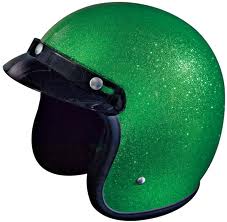 – Securely fastened when sitting, riding or pushing the machine.
– Securely fastened when sitting, riding or pushing the machine.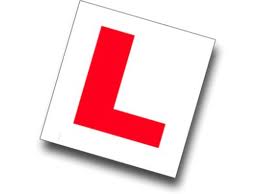 – Must be clearly displayed front and rear, and sized 7” x 7”. It should NOT be cut down or trimmed.
– Must be clearly displayed front and rear, and sized 7” x 7”. It should NOT be cut down or trimmed.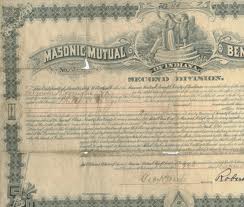 – The minimum legal requirement is Third Party. Third Party Fire and Theft is the minimum we recommend, and Fully Comprehensive is highly recommended.
– The minimum legal requirement is Third Party. Third Party Fire and Theft is the minimum we recommend, and Fully Comprehensive is highly recommended.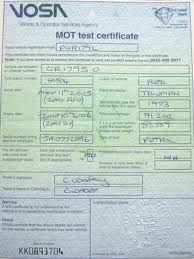 – Any bike over 3 years old must have a valid MOT, which is then renewable every year.
– Any bike over 3 years old must have a valid MOT, which is then renewable every year.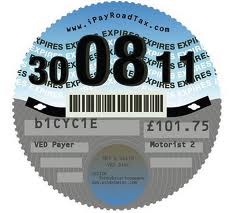 – The vehicle must be taxed, although you no longer need to display a Tax Disc. Online checks can be carried out to confirm whether a vehicle is taxed or not.
– The vehicle must be taxed, although you no longer need to display a Tax Disc. Online checks can be carried out to confirm whether a vehicle is taxed or not.